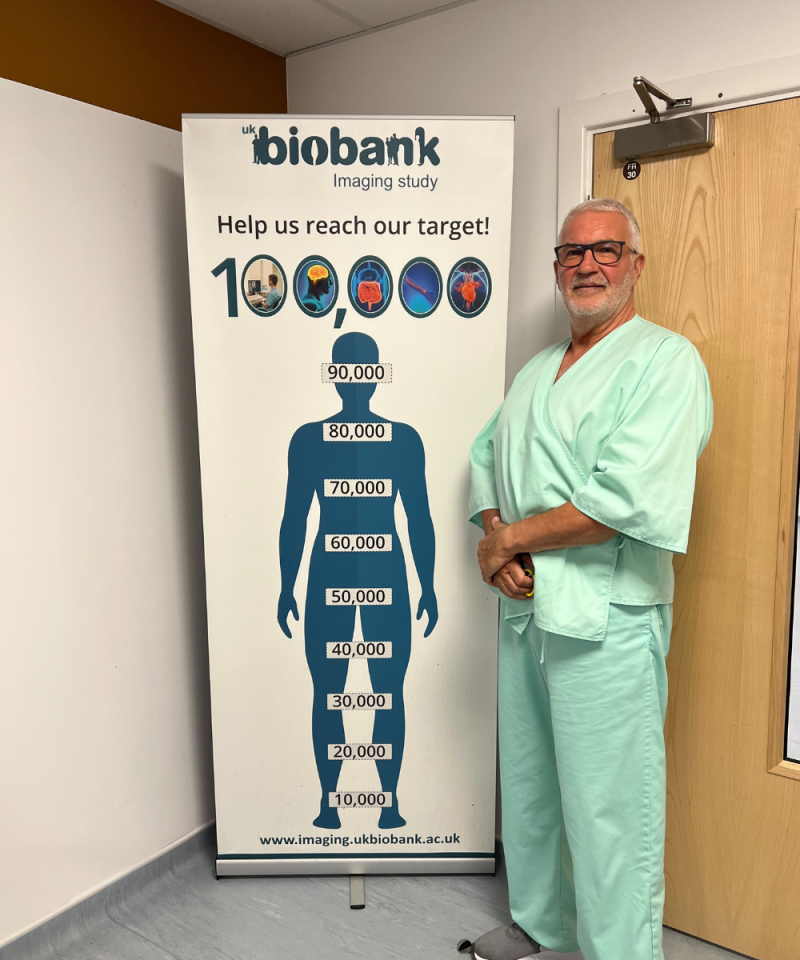
The UK BioBank project has reached a landmark of 100,000 people scanned, with images taken of volunteers' brains, hearts and other organs, and combined with genetic and lifestyle information to spot new patterns of disease.
After 11 years – and around 500,000 cumulative hours of scanning and £60 million of investment – the project has completed more than a billion scans across these 100,000 UK volunteers.
Now the data has been made available at low cost to teams around the world, in support of preventing common health conditions, including heart disease and cancer.
'Making the invisible visible'
Professor Sir Rory Collins, principal investigator and chief executive of UK Biobank, said: “The unprecedented scale of this imaging project – more than 10 times bigger than anything that existed before – makes it possible for scientists to see patterns of disease that just couldn’t otherwise be seen. Collecting scans from 100,000 volunteers seemed to be a pipe dream… some experts even asked if we’d included an extra zero by mistake.
“This massive imaging project is making the invisible visible. What’s more, by combining these images from different parts of the body with all the genetic and lifestyle information from our volunteers, scientists are getting a far better understanding of how our bodies work.”
Each appointment saw one of the 100,000 volunteers undergo magnetic resonance imaging, where more than 12,000 scans were collected per person.
Each volunteer also provided the same detailed data as when they first signed up to the UK Biobank project around 15 years ago, including lifestyle information, physical measurements (such as height, weight and grip strength) and a blood sample.
Combined, the images are a powerful tool to investigate how and why people get sick as they age and what to do about it, transforming research into diseases including dementia, heart disease, arthritis and diabetes.
'Give back to medical research'
So far, over 1,300 peer-reviewed scientific papers have been published based on UK Biobank’s imaging data.
Professor Naomi Allen, chief scientist at UK Biobank, said: "Researchers are already starting to use the imaging data, along with other data we have, to identify disease early and then target treatment at an earlier stage.”
The 100,000th participant,Steve, said: “My wife and I signed up to UK Biobank because we wanted to give back to medical research. We’ve all had family members who’ve had health issues and we’re all getting older so if we can help scientists discover new ways to prevent and treat illness then that’s a worthwhile cause that we’re delighted to be part of.
“I’ve loved being the 100,000th UK Biobank participant to be scanned and the team at the imaging centre have all been amazing. The whole imaging day has been a great experience and it’s been really enlightening to learn even more about what UK Biobank is about.”
Ongoing development
The imaging project was piloted in 2014, when it scanned more than 7,000 volunteers – a record-breaking number at the time.
The main phase began in 2016, welcoming 100,000 of UK Biobank’s 500,000 volunteers to a five-hour imaging appointment at one of four dedicated imaging centres across the country. The project continues to invite volunteers to imaging appointments beyond the 100,000 milestone.
A second phase of the imaging project was launched in 2022, aiming to perform repeat imaging on 60,000 of these 100,000 scanned participants, at least two years after their first imaging appointment. This project is ongoing and expected to reach completion in 2029.
The imaging element of the project is funded by the Medical Research Council, the Wellcome Trust and the British Heart Foundation.
(Image: Steve, the 100,000th volunter to be scanned, via BioBank)
